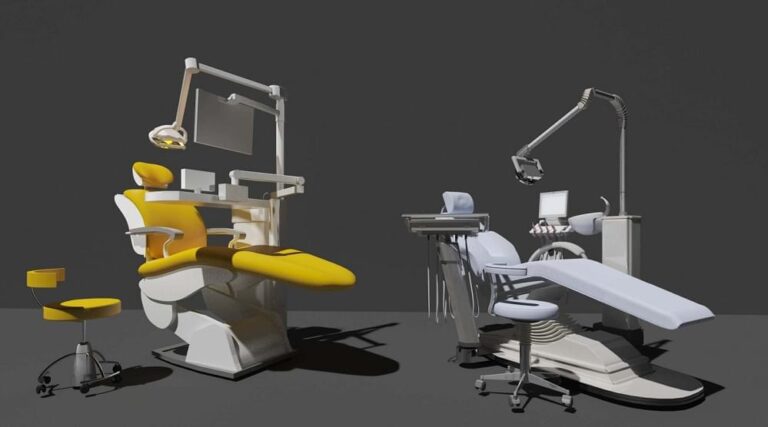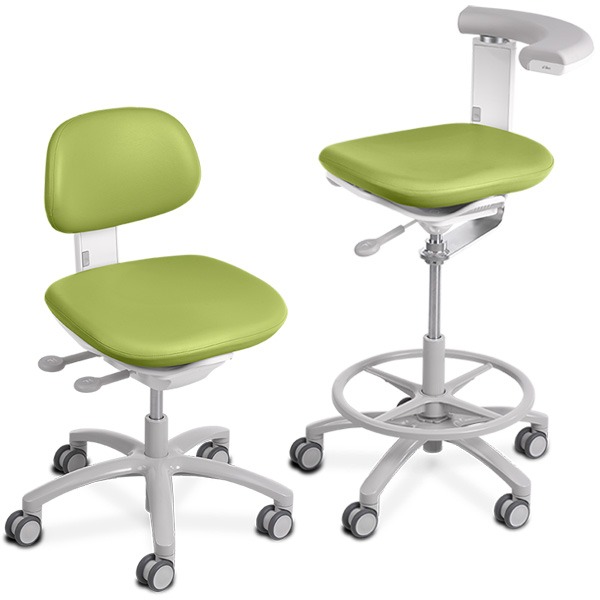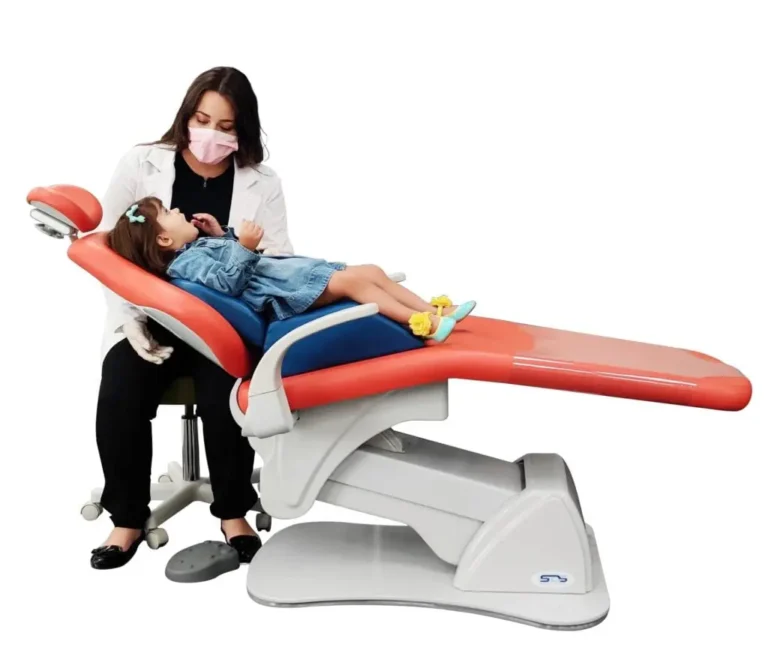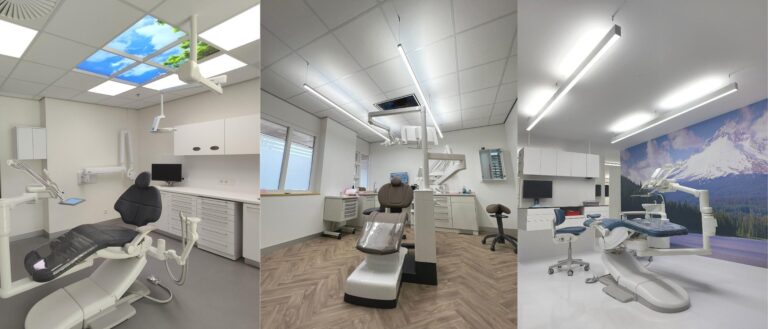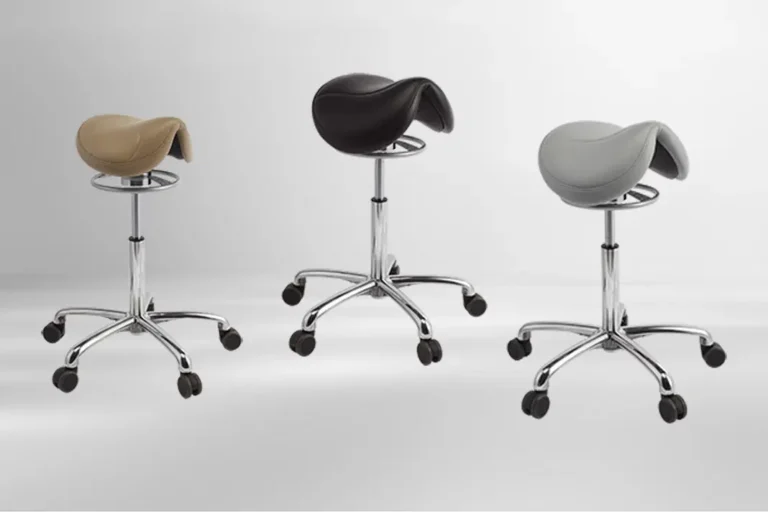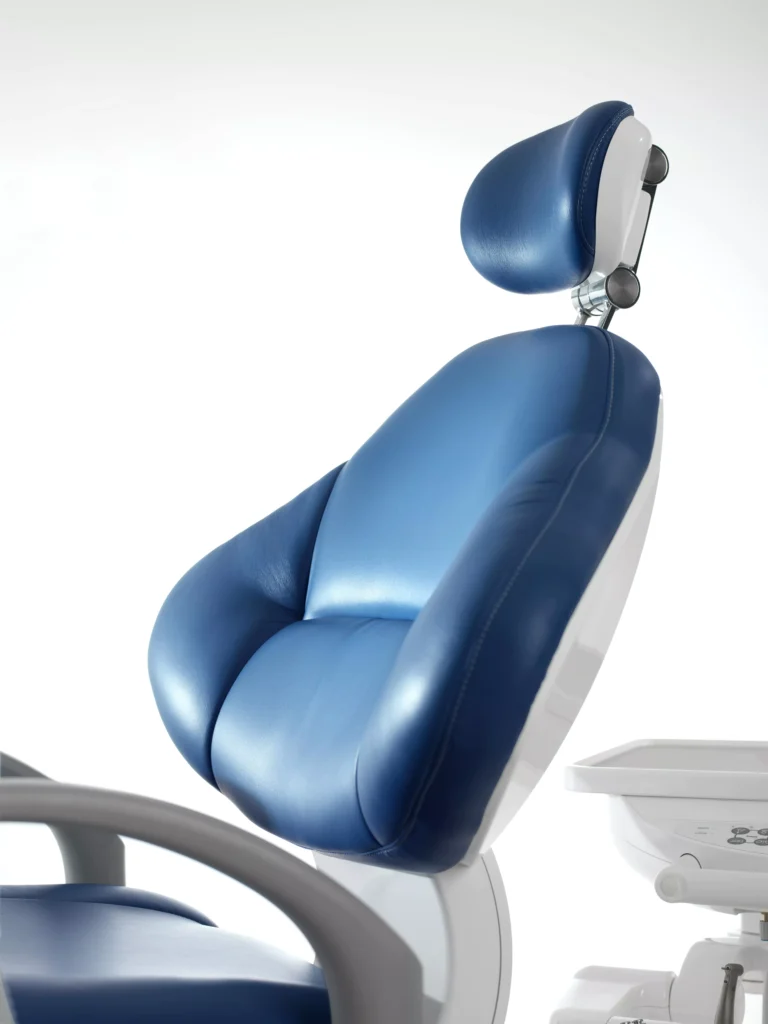In the world of dentistry, patient comfort is paramount. A comfortable patient is more likely to have a positive experience, leading to better outcomes and increased satisfaction. One often overlooked aspect of patient comfort is the humble dental chair pillow. These unsung heroes can significantly enhance the patient experience, providing both physical and emotional benefits. In this article, we’ll explore the unseen benefits of dental chair pillows and how they can revolutionize patient comfort in your dental practice.
The Power of Dental Chair Pillows
Dental chair pillows, such as those offered by Crescent Products and Specialized Care Co, are designed to provide the support needed for effective dental procedures and the comfort patients need to sit without undue stress. These pillows are crafted to be comfortable for the patient and ergonomic for the dentist and hygienist.
For instance, Crescent Headrests are memory foam pillows that support the patient’s neck as they recline. The slope of the cushions allows the patient’s head to gently tilt backwards and for the jaw to naturally turn up in an open-mouth position. This not only enhances patient comfort but also resolves strain for dentists and hygienists.
The Concept of Comfort in Dental Practices
Comfort in dental practices is a multifaceted concept that encompasses both the physical and emotional well-being of patients. Physical comfort is often associated with the support and cushioning provided by dental chairs, while emotional comfort involves reducing anxiety and creating a welcoming environment.
Physical Comfort
Dental chair pillows provide additional cushioning and support, helping to alleviate pressure points and discomfort during dental procedures. These pillows are designed to fill the gaps in dental chairs, providing pressure point relief across the entirety of the chair. This produces a cushioned surface that is more uniform, which lessens the pain and discomfort that the uneven surface of dental chairs may bring about.
Knee support pillows are also used in dental clinics to allow patients to maintain a comfortable seating position, with knees bent, without having to strain to keep themselves upright.
Emotional Comfort
The use of dental chair pillows can also contribute to emotional comfort by creating a more comfortable and relaxing environment. A comfortable patient is easier to treat and will have a higher likelihood of returning for future appointments.
Enhancing Comfort in Dental Practices: A Closer Look
Let’s delve deeper into the ways dental practices can enhance both physical and emotional comfort for their patients.
Ergonomics and Comfort
Ergonomics and comfort should be at the forefront of your decision when choosing a dental chair pillow. The pillow should facilitate a neutral posture of the spine, shoulder, elbow, and wrist, limiting excessive reaching. A well-designed pillow can help alleviate discomfort, especially for patients who are not used to lying down in these positions for extended periods of time.
For instance, memory foam pads can fill the void left between the patient and dental chair, allowing them to relax while lying down. These pads are designed to conform to the patient’s body, providing personalized support and comfort.
Infection Control
In addition to comfort, dental chair pillows must also meet the stringent infection control standards of dental practices. Look for pillows with antimicrobial properties and fluid-resistant covers, making it easy to wipe away and disinfect the material with disinfectant cleaners. Moreover, these pillows are designed with removable and easy-to-clean parts, which can streamline the cleaning and sanitation processes in between patients.
Making the Right Choice
When selecting a dental chair pillow, consider the needs of your patients and the type of dental chair you have. Look for pillows that offer excellent durability, are easy to clean, and provide optimal comfort and support. Remember, the right pillow can greatly enhance your patients’ experience and facilitate your work as a dental professional.
The Evolution of Dental Chairs: A Glimpse into the Past
Dental chairs, integral to the field of dentistry, have witnessed a remarkable transformation over the centuries. Their evolution reflects the broader advancements in dental care, moving from rudimentary designs to state-of-the-art equipment tailored for optimal patient comfort and practitioner ease.
The Humble Beginnings
The story of dental chairs begins in the 18th century. Unlike the sophisticated models we’re accustomed to today, the earliest versions were mere wooden benches or repurposed armchairs. They were rudimentary, offering little in terms of comfort or adjustability. The primary aim was simple: provide a place for the patient to sit during procedures.
The 19th Century – A Period of Innovation
As dentistry gained professional recognition, dental chairs began to evolve. The 19th century saw the introduction of adjustable backrests, footrests, and even hydraulic systems. These advancements marked a significant shift towards prioritizing patient comfort and practitioner convenience.
The 20th Century – The Era of Electrification
The 20th century ushered in a new era for dental chairs with the integration of electrical components. This allowed for enhanced adjustability and the addition of features like built-in spittoons and overhead lights. Dental chairs were no longer just passive pieces of furniture but active contributors to the efficiency of dental procedures.
The Next Generation of Dental Chairs: What to Expect
As we stand at the juncture of the present and future, it’s evident that dental chairs will continue to evolve, incorporating cutting-edge technology and innovative design principles. Here’s what we can expect from the next generation of dental chairs:
Enhanced Ergonomics
Future dental chairs will prioritize ergonomics like never before. Expect to see chairs with advanced adjustability features, allowing for precise positioning of the patient and optimal access for the dentist. Improved lumbar support, adjustable headrests, and customizable armrests will ensure maximum comfort for patients of all sizes and shapes.
Smart Technology Integration
The dental chairs of tomorrow will be equipped with smart technology, seamlessly integrating with other dental equipment and software. This could include built-in sensors for monitoring patient vitals, wireless connectivity for easy data transfer, and even voice-activated controls for hands-free operation.
Multifunctional Design
As dental practices evolve to offer a wider range of services, dental chairs will need to adapt. Expect to see chairs with modular designs, allowing for easy reconfiguration to accommodate different procedures. Built-in features like intraoral cameras, LED lighting, and even 3D imaging systems could become standard.
Patient-Centric Features
Patient comfort will remain a top priority in the next generation of dental chairs. Integrated massage systems, temperature control, and personalized multimedia entertainment options can make the dental experience more relaxing for patients.
Safety Protocols
Advanced chairs can have built-in safety features, such as emergency stop buttons or automatic recline functions in case a patient experiences discomfort or distress. These features will ensure that patient safety remains paramount.
Real-World Case Studies and Observations
In the realm of dentistry, the ergonomics of chair positioning play a pivotal role in daily practice. Upholding clinical excellence necessitates a deep understanding of high-quality components like Kavo dental chair parts. They provide customization for various dental hygiene chair positions and ensure lasting reliability and comfort for both practitioners and patients.
Regular maintenance and upgrades with these specialized parts keep our chairs at peak performance, aligning with our ergonomic standards.
The Evolution of Dental Chair Design and Its Impact
The evolution of dental chairs from basic furniture to ergonomically advanced equipment signifies a major shift in dentistry. The move from standing to sitting practice revolutionized dental procedures and brought about ergonomic challenges, highlighting the importance of dental chair design in clinical practice and its impact on musculoskeletal health.
Ergonomic Challenges and Solutions in Dental Chair Positions
The shift to seated dentistry required rethinking the dental patient chair position and the design of dental clinician chairs. The variety of dental chair positions plays a key role, directly impacting the dentist’s posture and career longevity. Innovative designs in chairs now cater to both 4-handed dentistry positions and support the 7 o’clock position in dentistry, underscoring their tailored fit for diverse clinical scenarios.
Musculoskeletal disorders (MSDs) are a common health problem among dentists. A dentist can spend up to 60,000 hours in a lifetime working in tense and distorted positions, with consequent musculoskeletal problems. With 66.7% of dental professionals reporting pain in the neck, this area was the most frequently affected by MSD.
The Rise of Saddle Stools in Dental Practice
There has been a rise in both awareness and usage of saddle stools among dental practitioners in recent years. A properly made and fitted stool can increase productivity, ease workflow, and reduce the risk of injury in the dental office.
The Role of Dental Chair Design in Practitioner Health
The design of dental chairs plays a pivotal role in the health and posture of dental practitioners. The right chair design can significantly reduce the risk of musculoskeletal disorders, enhance comfort, and boost productivity.
Traditional vs. Ergonomic Dental Chairs
Traditional dental chairs, while common, often lack the necessary support for the back and neck, leading to discomfort and potential health issues over time. Particularly for female practitioners, traditional chairs can pose ergonomic challenges due to their design, which is typically based on male dimensions.
On the other hand, ergonomic dental chairs are designed to cater to the varying needs of dental professionals. They offer adjustable features such as height, backrest, and armrests, allowing dental practitioners to customize their seating position for optimal comfort and support. These chairs provide proper lumbar support, encouraging an upright sitting position and reducing strain on the spine.
Ergonomic chairs also come with features like cushioned seats and breathable materials, enhancing comfort, reducing pressure points, and allowing for better weight distribution. This can significantly alleviate discomfort and minimize fatigue, ultimately improving focus and overall job satisfaction.
Innovations in Dental Chair Design
Technological advancements have had a significant impact on dental chair design. Today’s chairs are sleek, compact, and often modular, allowing for easy customization based on specific dental procedures or patient needs. Materials have also evolved, with chairs now crafted from antimicrobial fabrics and easy-to-clean surfaces, ensuring a hygienic environment.
Moreover, the middle and high-end chair dental units have a variety of personalized operation procedures, such as preset positions, automatic return, last position memory, and safety stop. These features not only enhance the patient experience but also improve the efficiency and precision of dental procedures.
All the Reasons Why Investing in a New Dental Chair is Crucial
To properly develop the work in a dental clinic, it is essential that the equipment meets a series of requirements and meets the needs of the dentist. On the one hand, its appearance must convey an adequate and professional image, but, in addition, it is necessary to take care of the well-being and comfort of patients and of the professional team that works in the office. And one of the most important elements of the equipment is to have a modern dental chair.
Why Should We Change to a More Modern Dental Chair?
- Renewal of the Corporate Image: It is evident that, every so often, changing part of the furniture helps to make a good impression on patients. If a person arrives at the clinic and notes that the chair is outdated, his or her opinion will generally be negative. Over the years, the designs and the image of the dental chairs are changing.
- Create an Investment and Amortization Plan: The need to update a clinic is appreciated, for example, when the technician goes to make frequent renovations. Sometimes all the plastic elements of the dental chairs, such as the hoses, the internal and external suction system or the drains, degrade and dry out, which can lead to losses and leaks. In this sense, it is estimated that plastics have a lifespan of 10 years. A modern dental chair has new treatments and materials that extend that useful life.
- The Quality of Ergonomics: This is the most important sign when it comes to getting a modern dental chair. Each year, the materials must be tested and the advice and updates offered by professionals in the sector must be listened to. The patient needs attention and that the environment does not cause discomfort. Many clinics already have sedation techniques and systems, but if we have a modern and comfortable dental chair it also helps to combat odontophobia, that is, the fear and anxiety that some people feel when going to the dentist.
Elevate Patient Comfort with MyJet Luxopedic Chair Toppers
Our head and neck support pillows seamlessly fit onto all dental chairs and feature warm or cool temperature regulation and various angles of use. Combined with our lumbar support and knee bolster pillows, MyJet Luxopedic Chair Toppers provide unparalleled comfort for your patients.
Conclusion
The humble dental chair pillow is a powerful tool in enhancing patient comfort and satisfaction. By providing both physical and emotional comfort, these pillows can transform the dental experience for patients. As dental practices continue to evolve, investing in high-quality, ergonomic dental chairs and pillows will be crucial in delivering exceptional patient care.
The evolution of dental chairs reflects the broader advancements in dentistry, with each generation bringing new innovations and improvements. As we look towards the future, we can expect dental chairs to incorporate cutting-edge technology, enhanced ergonomics, and patient-centric features, further revolutionizing the field of dentistry.
Ultimately, the goal is to create a harmonious blend of state-of-the-art technology and unmatched patient comfort. By prioritizing both the needs of the practitioner and the well-being of the patient, the next generation of dental chairs promises to transform the dental experience, making it more efficient, comfortable, and enjoyable for all involved.
FAQs
What types of dental chair pillows are available?
There are various types of dental chair pillows, including memory foam, contoured, and adjustable pillows.
How do dental chair pillows improve patient comfort?
Dental chair pillows provide additional cushioning and support, helping to alleviate pressure points and discomfort during dental procedures. They can also help reduce anxiety by creating a more comfortable and relaxing environment for patients.
Can dental chair pillows be used with any dental chair?
Most dental chair pillows are designed to be compatible with a wide range of dental chairs, making it easy to incorporate them into your practice.
In conclusion, dental chair pillows can significantly enhance patient comfort and satisfaction during dental procedures. By investing in high-quality dental chair pillows, dental practices can create a more comfortable and enjoyable experience for their patients, leading to increased patient retention and positive word-of-mouth referrals.

